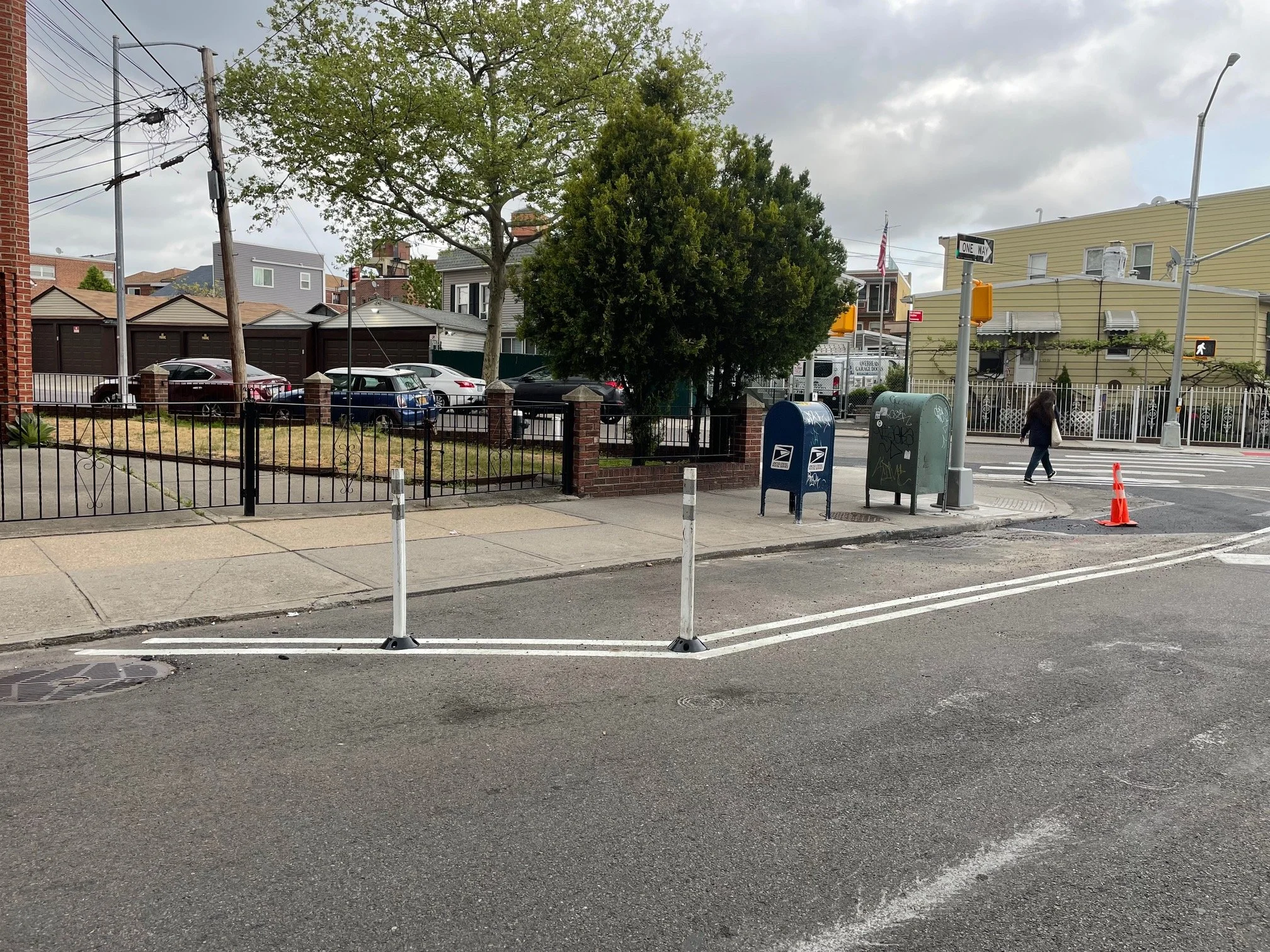Council approves daylighting and other transportation bills
/The City Council approved a bill, introduced by Queens Councilmember Selvena Brooks-Powers, on Thursday which would require the Department of Transportation to daylight 100 intersections per year. Photo by Gerardo Romo / NYC Council Media Unit
By Ryan Schwach
The City Council voted on Thursday to approve a handful of bills, including one that would require the Department of Transportation to bring “daylighting” to 100 street intersections per year, starting in 2025.
The bill, Introduction 854-A, proposed by Queens Councilmember and Transportation Committee Chair Selvena Brooks-Powers, would make DOT “daylight” 100 intersections, which means removing the parking spots closest to the intersection to increase sightline visibility.
Though the state currently requires daylighting on streets, the city’s requirements override that directive. The city currently does not have a daylighting requirement.
“Daylighting is a proven safety measure that expands sight lines and intersections where traffic violence often takes place,” Brooks-Powers said prior to the vote on the legislation. “Daylighting increases visibility to oncoming traffic and reduces danger for pedestrians and driver alike at these intersections. I believe daylighting, especially when implemented with physical features, can prevent injuries and deaths in New York.”
“Far too many New Yorkers are victimized by preventable traffic violence,” added Brooks-Powers.
Daylighting measures were already pushed this year by Brooks-Powers and fellow Queens Councilmembers Tiffany Cabán and Julie Won – both of whom co-sponsored 854-A –at Newtown Road in Astoria, where 7-year-old Dolma Naadhun was killed when a driver rolled through a stop sign into the crosswalk.
Now, there is a painted section at the crosswalk of Newtown Road where Naadhun was killed, as well as plastic bollards which stop cars from parking there.
There is also a traffic light, which the trio of councilmembers and Naadhun’s family called for.
Naadhun is one of 41 New Yorkers who have been killed in traffic related incidents this year, and one of nine in Queens, according to New York City Open Data.
“While traffic fatalities have fallen sharply over recent decades, the overall increase in traffic violence since 2018 has been concerning, particularly the increase of children killed on our streets,” said Speaker Adrienne Adams, who spoke in favor of the bill at the stated meeting.
“Behind every crash is a family and the community impacted by this violence,” she said.
The bill also would require, under certain criteria, some sort of physical barrier to prevent drivers from parking in the spot. DOT Commissioner Ydanis Rodriguez said the physical barriers would be necessary at a hearing in February.
“Daylighting…must be implemented with physical infrastructure in the newly opened space to prevent vehicles from turning more quickly,” Rodriguez said.
At that February hearing, the DOT originally said they opposed the bill which was eventually approved today.
However, StreetsBlog recently reported that Rodriguez and the DOT supported the intent of the bills, but said that they believed they “need to be nimble.”
However, the agency told the Eagle that they are in favor of this version of the legislation, due to timeline changes.
Daylighting measures were added to Newtown Road in Astoria, where 7-year-old Dolma Naadhun was killed by a driver in February. Eagle photo by Jacob Kaye
“Through Vision Zero, DOT has driven traffic deaths to historic lows—and we’ll continue taking our data-driven approach to traffic safety, which has helped New York City buck national fatality trends,” said DOT spokesperson Vincent Barone. “We look forward to partnering with the Council to implement our life-saving projects across the city.”
In the council chambers, the bill was approved with a vote of 40-7.
“No” votes included Brooks-Powers’ fellow Queens members Vickie Paladino and Joanna Ariola, as well as Councilmebers Ari Kagan, Joe Borelli and Kalman Yeger.
Yeger articulated his opposition on the council floor, saying that since the bill says DOT will use “existing resources” to pay for the measures, he is worried about the finances.
“So the question of course that I asked myself is, ‘What won't they do in my district when this is passed? What speed pump won't I get? What traffic signal won't I get? What broken sidewalk won't they fix? What thing that's broken in any one of our neighborhoods? What won't they do because they're now going to do something that we've asked them to do?’” he said. “I'm also a little concerned with giving them a blank check. I've suggested in the past that what might make sense is that we do a bill saying, ‘Here's a list of locations where we need to have something done.’”
Other officials voted against the bill because they argued daylighting does not make the same sense in every case, and takes away local control over intersections in favor of a more uniform approach.
The council also approved two other transportation related bills on Thursday, which DOT said they are also in favor of.
One, Introduction 679-A, sponsored by Brooklyn Councilmember Rita Joseph, would require the installation of “traffic calming devices” within senior pedestrian zones to slow traffic in those areas.
“Our seniors deserve to feel safe and supported while crossing the street, and by installing traffic calming devices in senior pedestrian zones we are making crucial steps toward achieving that goal,” said Joseph. “This initiative not only enhances safety and accessibility but also promotes healthy and active aging for our seniors.”
The other, Introduction 805-A, sponsored by Public Advocate Jumaane Williams, would require DOT to do a comprehensive study on all traffic collisions and make that report available to the city’s community boards.
“Traffic deaths are preventable, 100 percent preventable,” said Williams. “It is my hope that the bills being voted on today will be part of that prevention, including mine.”





